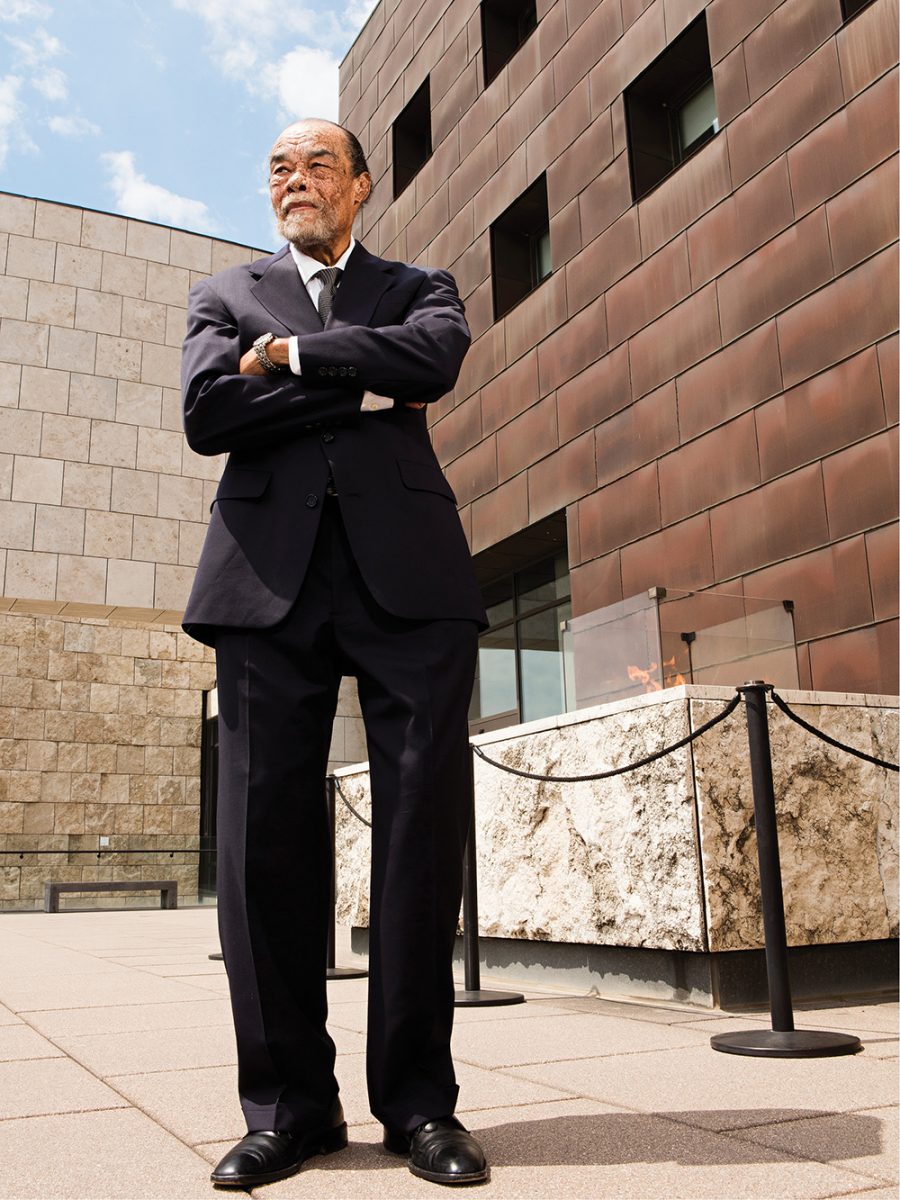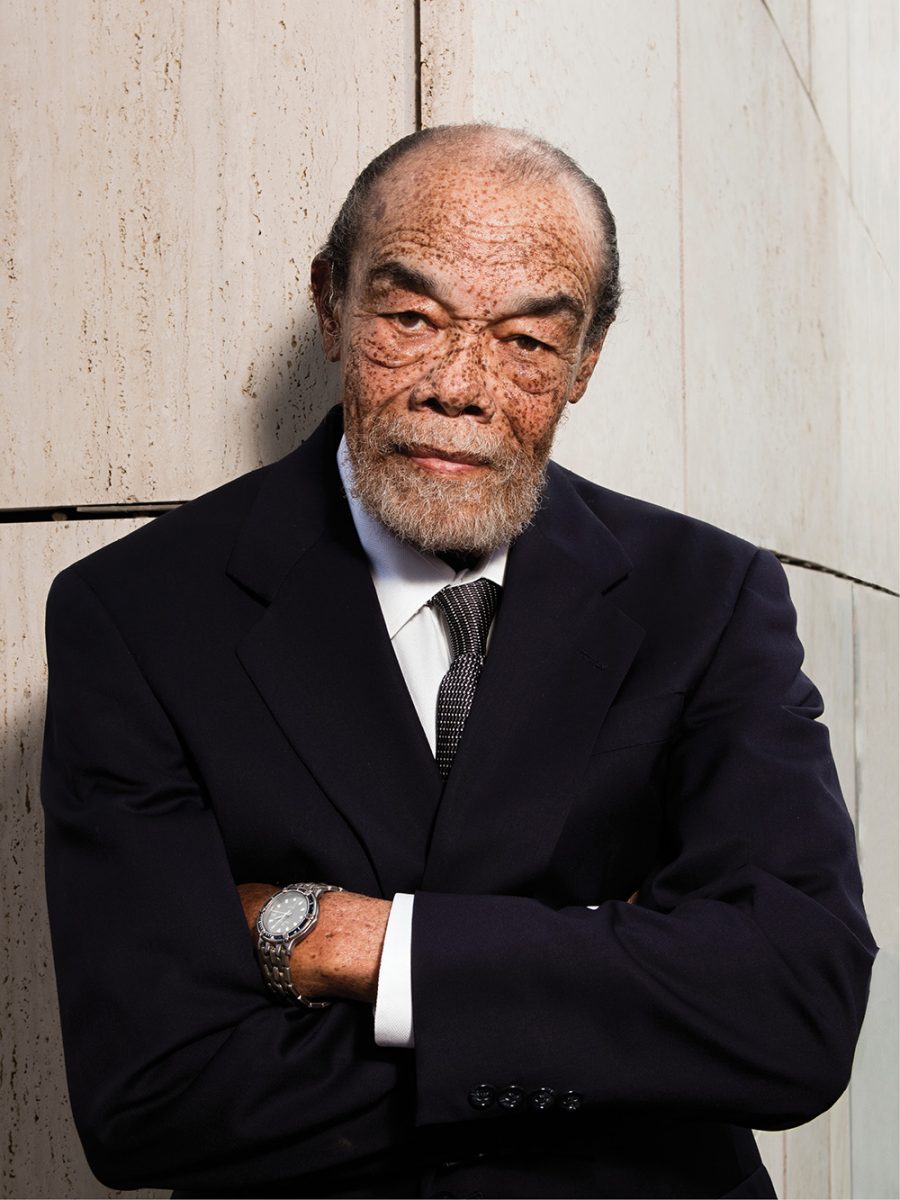This year during Black History Month, Cincinnati’s City Council honored a warrior from the fronts of both community renewal and historic preservation, passions fed by his deep well of historical knowledge. Carl B. Westmoreland’s almost 50-year career combining these causes carried him to international prominence. He became the first African American to serve on the National Trust for Historic Preservation, traveling the world to work and speak on preservation issues. Ronald Reagan even sent him as a delegate to China, because, Westmoreland says, being from Lincoln Heights he shared with China’s minister of culture the indignity of coming from a place that didn’t get respect. Westmoreland moved and shook for the creation of the National Underground Railroad Freedom Center where today he serves as historian and curator of the slave pen he discovered, restored, and had installed within its walls.

Photograph by Annette Navarro
But Westmoreland hasn’t always been so loved. At the helm of the Mount Auburn Good Housing Foundation in 1967, he championed property ownership for Blacks and built a rep for using no-holds-barred tactics to put real estate into the hands of African-Americans. His brusqueness of voice and knack for amassing (and using) political clout earned him more than a few enemies among the elite.
Westmoreland’s preoccupation with property is hard-wired deep in his family history. He learned growing up at the kitchen table how 100 acres bequeathed to his great grandfather’s family at emancipation were stolen by a descendant of their former slave owner. And his earliest memories include watching homes hauled by mule across the Miami-Erie canal to make way for Building 700 at the General Electric Plant.
What personal experiences influenced you early on and led to you becoming an activist? There’s a fence in Lockland. It’s still there on Shepherd Lane, a 10-foot fence. Apartheid wasn’t in South Africa, it was here. We couldn’t go across that fence and play baseball. We couldn’t do anything. Even though my dad went to Lockland High School, even though he played on their baseball team, he could never go back there and practice and just hang out the way kids do. That fence in Lockland had been there all my father’s life, and now all my life, too.
You started out by helping West End households displaced by the construction of I-75 move to Mt. Auburn. Later you bought your first house in Mt. Auburn and decided to do something fundamental about problems in that neighborhood. What prompted you to get involved? What happened was that we had a combination of people who were there in Mt. Auburn, a couple of white people, a couple of Jewish people, and Black people, and we all agreed that what happened in the West End was based on the fact that Black people didn’t own property. And that as long as that is a phenomenon in America, we would be moved at the whim of the larger community. We’re still looking at that now…we still don’t own anything.
So with the Mt. Auburn Good Housing Foundation (MAGHF) and $7,000 in seed money you rehabbed your first building. You built on that success to procure millions for ever-bigger projects in Madisonville, Evanston, Carthage, and Over-the-Rhine. With success came investigations into alleged preferential treatment and financial indiscretions—though no evidence of criminal wrongdoing was ever found. Why were your development tactics so controversial? They were the traditional tactics practiced in the real estate business. We succeeded at doing what real estate developers do…on a small scale, compared to someone like Donald Trump. But we became the largest property owner in Mt. Auburn. And it was just through paying whatever it took to get it, having set goals and then understanding what it would take to meet the requirements of the financial institutions that would ultimately finance it, and being able to develop plans that we could take to the city and to the business community so that they respected what we were attempting to do. There were people who just didn’t like that.
I believed in social change within the lines of the American democratic system. So I didn’t burn any buildings, I didn’t encourage anybody to do anything like that, but what I did do was what I’d done all my life: I played point guard. And the only way you do that is, you take a beating. You go straight at it, and you share the ball.
You have been adept at switching between being confrontational and taking a more diplomatic approach. It was just a matter of doing what people who succeed, regardless of color, do: Get a little taller and assert themselves. Because you can’t go to a closing table in a business deal with your hat in your hand. You’ve got to have your chest out. They have to feel comfortable that we’re doing this and we’re not throwing our money to the wind.
What we were able to do was work with people who had different economic, political, and frankly racial backgrounds. Two of our most dependable advocates were Gene Ruehlmann, who was the Republican mayor of Cincinnati, and Willis Gradison, who was a Republican and later became a congressman, because we used their language. Now, we built these alliances, but I’m not a Republican. I’m probably left of Roosevelt.
You were also known for a confrontational style. Do you still have that today? Or have you changed your philosophy? I’m just older. My family paid for it. It hurt me but I’m used to getting beat up. But my family suffered. My wife worked for the United Way and was the head of human resources in the region, and she couldn’t become a vice president because she wouldn’t divorce me. They told her that straight up: “That guy’s a troublemaker.”
Are you still a troublemaker? When I came to the Freedom Center in 2005, I was given an opportunity to start fresh. And doggone it, when things would come up that I felt strongly about, I would say something about it. For example, they said that the staff could participate in evaluating proposals for the design of the building. They said the exterior was going to be marble. I had a fit. So I wrote to some of the wealthiest, most powerful people in this town, saying “This doesn’t represent our journey.” See, Black America doesn’t know anything about smooth journeys. And [after that] they hired a guy from Lincoln Heights who I’ve known most of my life. He did the exterior and they turned the marble over on the rough side. My point: I shared a historical truth, and the world has applauded what this institution did.

Photograph by Annette Navarro
Where does the fight to increase home ownership among Blacks stand today? It’s worse. The Recession wiped us out. We’ve not done—and I’m at the forefront of the “we”—a good job of conveying to young African-American men in particular the value of deferred gratification. Many Black people are only a check and a half away from bankruptcy. We weren’t allowed to participate in the American educational system or economy until the last half of the 20th century—I mean as a group—so many of our children are failing in school because their parents didn’t do well. Education and work are needed to build stable communities. And I think in our community there’s a certain status that comes when you’re able to stick your chest out and say, My son’s been having a problem with calculus, but I got him a tutor, and he’s getting a B this time. And it goes all over the neighborhood. Either we do that or we’re going to become more and more marginalized. And we can’t get much more marginalized.
Have you noted a change among the white power structure—the “people in suits,” as you called them? Is there more of a dialogue today? I suggest that you look at the national headlines. The dialogue going on in America, particularly around urban America, has deteriorated. You’ve got white, blue-collar people who’ve only finished high school or maybe didn’t do that, who now are on the margins, or worse yet, are unemployed. The same story exists with Black men, ages 18–25. Half of them are out of work and everybody says they’re lazy. I’m saying that we didn’t educate them, we didn’t train them, we didn’t inspire them, and we make fun of working class people.
One of the things that we tried to convey, and as long as I’m living I’ll work at, is that the more people with a vested interest are sitting at the table, the healthier urban centers will be. And that’s to everyone’s benefit. That’s a part of the work that we do here, just looking at the history of what was, and then where we are now, and what do we do with that information. It’s up to us to build bridges.
You learned of the slave pen hidden in a tobacco barn in Kentucky and brought it to the Freedom Center. What stories came with it? I slept in this thing at night, with snakes and raccoons and possums, because I wanted to feel what it was like to be in there, what it was like to lose my family. This gentleman was raised across the road from it, and his grandfather told him about watching people being taken out of here. This woman’s grandmother was raped at the place. She gave me this narrative of her grandmother being chased around a table in the big house on a Thanksgiving morning, and [telling her slave master], “You all have lightened the skin of this family for the last time.” America doesn’t want to deal with that. Unless we know about it, and unless we come to terms with it, then these places are just objects.
So how do you connect exhibits to solutions for real world problems? I think we have to be a stimulus that inspires people. If you think about it, every one of us has some genius in us. Why don’t we find it? And why don’t we require that parents help discover it? At some point people have to be allowed to have an impact. There has to be some kind of return on the investment. For everybody. When I was in college, I did what many scholarship students do, decided I was going to be a radical and forgot about classes. Then I got a note in No. 2 pencil from my grandmother. After I finished reading it and crying, I kicked my roommate out, and stayed up all night finishing a paper.
What did the note say? What the president of Morehouse College, Dr. Benjamin Mays, said to us at convocation when I was an undergraduate: “You owe it to them to do your best and then go back and give service for the rest of your life.” Because this city is too precious. It’s one of the most attractive cities that I’ve ever seen. I’m blessed to have been born and raised here. And what’s wrong with it is what we collectively haven’t done, and haven’t empowered each other to do.






Facebook Comments